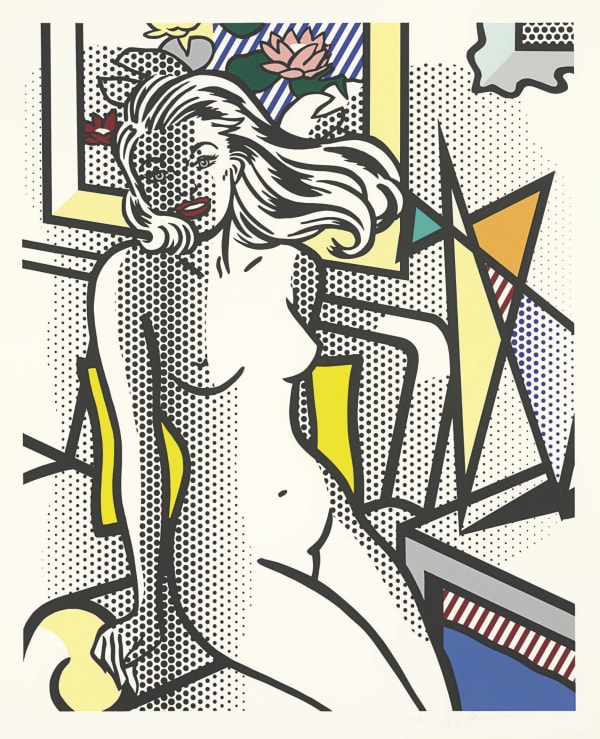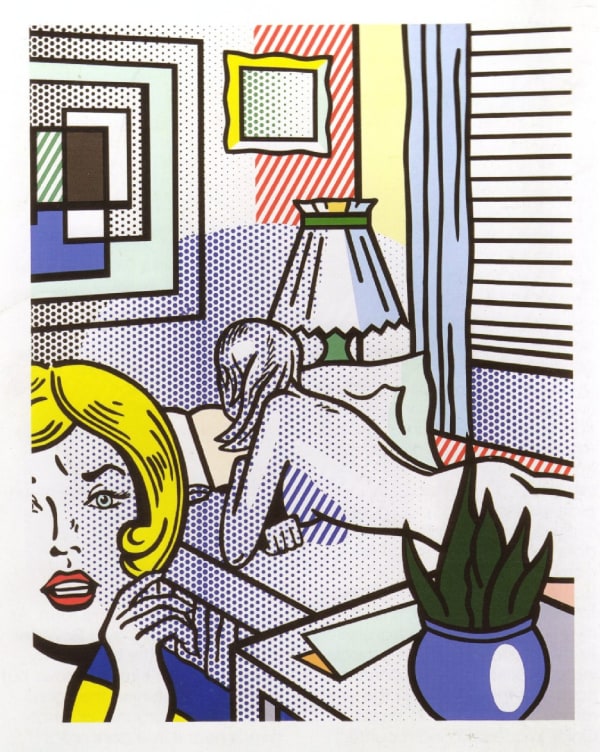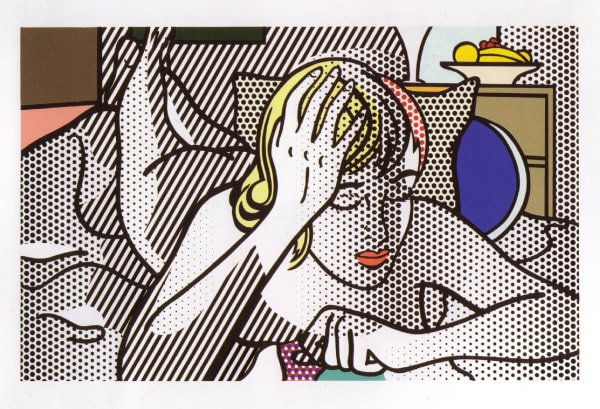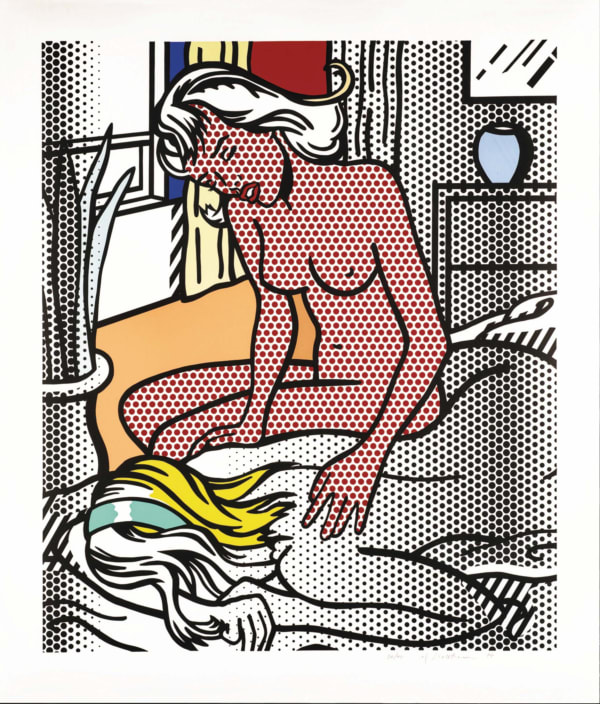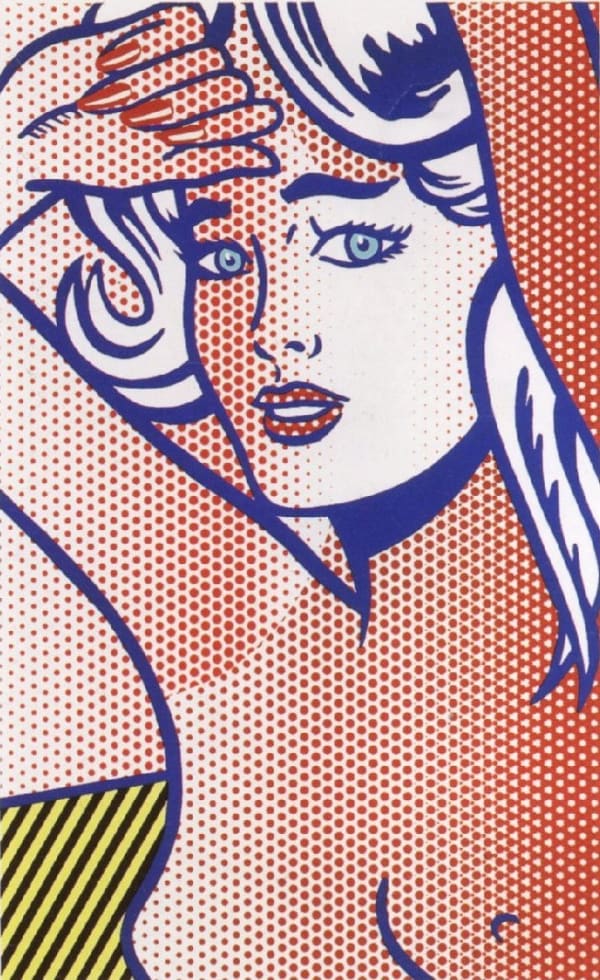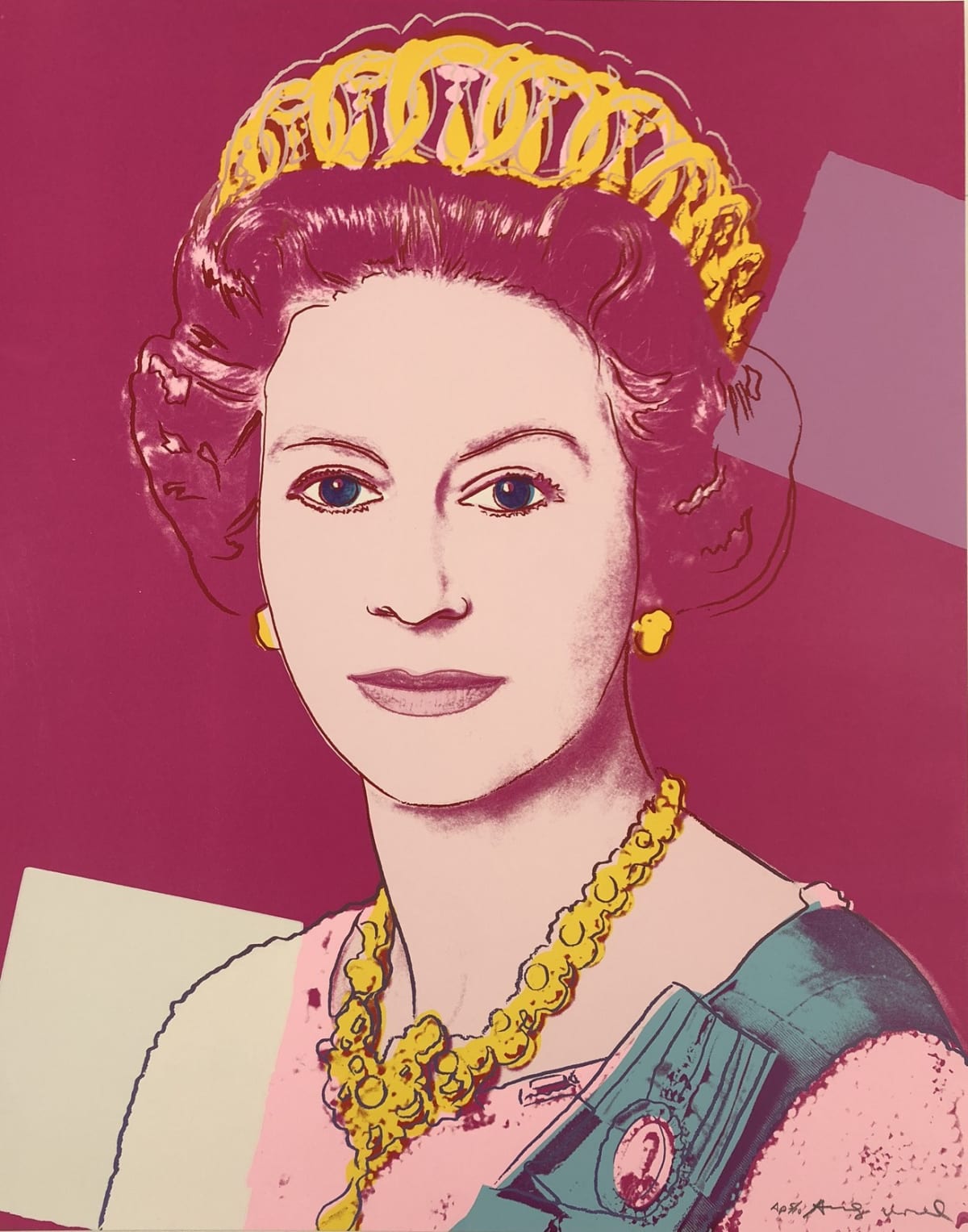Roy Lichtenstein 1923-1997
Roy Lichtenstein (1923–1997) was a pioneering figure of American Pop Art, known for his bold, graphic style that redefined the relationship between fine art and mass culture. Alongside Andy Warhol, Lichtenstein emerged in the 1960s as one of the leading voices in a movement that challenged the dominance of Abstract Expressionism by embracing the language of consumerism, comic strips, and commercial printing.
Best known for his comic-inspired works, Lichtenstein elevated the visual clichés of mid-century American life into serious painterly investigations. His compositions are characterised by flat planes, primary colours, heavy outlines, and his signature use of Benday dots — a technique borrowed from commercial offset printing. Though often associated with parody, Lichtenstein’s work is rooted in formalism, irony, and art historical reference.
Today, Roy Lichtenstein’s paintings, prints, and multiples are among the most recognisable in post-war art. His influence extends across movements and generations, and his work remains highly sought after by collectors and institutions worldwide.
Roy Lichtenstein was born in New York City in 1923 and raised on Manhattan’s Upper West Side. He studied watercolour at the Art Students League and later enrolled at Ohio State University, where he pursued fine art before being drafted into military service during World War II. After the war, he completed his studies and briefly taught at Ohio State, balancing academic life with work as a commercial art instructor and industrial designer.
Throughout the 1950s, Lichtenstein experimented with abstraction while subtly incorporating cartoon imagery into his canvases. In 1957, he returned to New York and began embedding figures like Mickey Mouse and Bugs Bunny into his abstract paintings—prefiguring the shift that would define his breakthrough in the 1960s.
Lichtenstein’s first fully Pop works emerged in 1961, featuring direct appropriations of comic book panels and advertisements. By simplifying linework, mimicking mechanical printing, and isolating emotionally charged but generic scenes, Lichtenstein transformed disposable popular imagery into enduring art historical icons. His practice expanded beyond comics to include art historical pastiches, architectural compositions, and sculptural works.
In 1964, Lichtenstein became the first American Pop artist to exhibit at the Tate Gallery in London. His first museum retrospective followed in 1967 at the Pasadena Art Museum. Over the next three decades, his work was shown internationally to critical acclaim. In 1995, he received the National Medal of Arts from President Bill Clinton in recognition of his artistic legacy.
Following his death in 1997, the Roy Lichtenstein Foundation was established in 1999 to preserve and promote his work and legacy.
-

Roy Lichtenstein - Multiple Visions | Mudec, Milano
1 May - 8 September 2019 September 8, 2019Mudec - Museum of Cultures pays tribute to one of the most important icons of the 20th Century art, Roy Lichtenstein, with the exhibition 'Roy...Read more -

Lichtenstein: A Retrospective | Tate Modern, London
21 February – 27 May 2013 May 13, 2013Tate's Retrospective showcases such key paintings as Look Mickey. 1961 lent from the National Gallery Art, Washington and his monumental Artist's Studio series of 1973-4....Read more
-

Roy Lichtenstein, Nudes Series
16 Feb - 30 Apr 2020Based on 'Love' and 'Girl' comic-book illustrations, not live models, Nudes Series published in 1994 were artist's first images of the subject. Soon thereafter he explored the theme in his paintings. The series, which consist of six images and three states, also contains iconographic references to others of his earlier works: The Mirrors, Imperfects, Waterlilies, and Interiors.Read more
Nude Series comprise of nine screenprints were produced at Tyler Graphics, Mount Kisco, New York and are recorded in the second volume of the catalogue raisonné of the artist's prints (Corlett). As well as using hand-cut stencils to produce his trademark Benday dots in irregularly shaped pieces, Lichtenstein employed computer-generated dye-cut stencils, produced by Swan Engraving, for some of the areas of dots and patterns in these prints.
-

Roy Lichtenstein
10 - 31 Jan 2012In the final years of his life, Lichtenstein took up the theme of the nude - one of the major subjects in the history of visual art - and it...Read more






